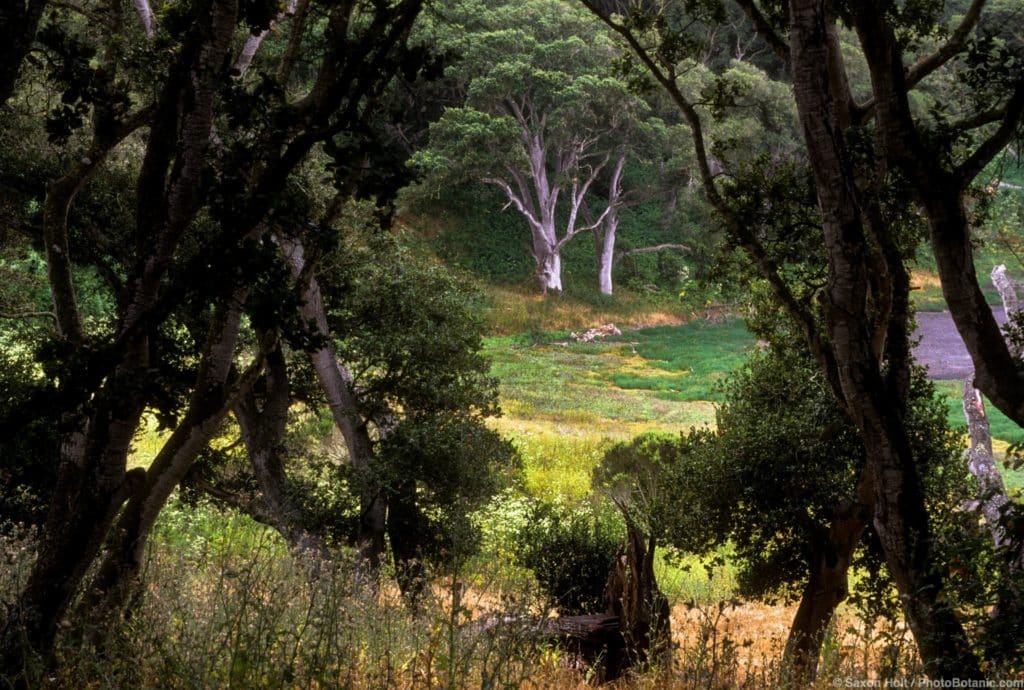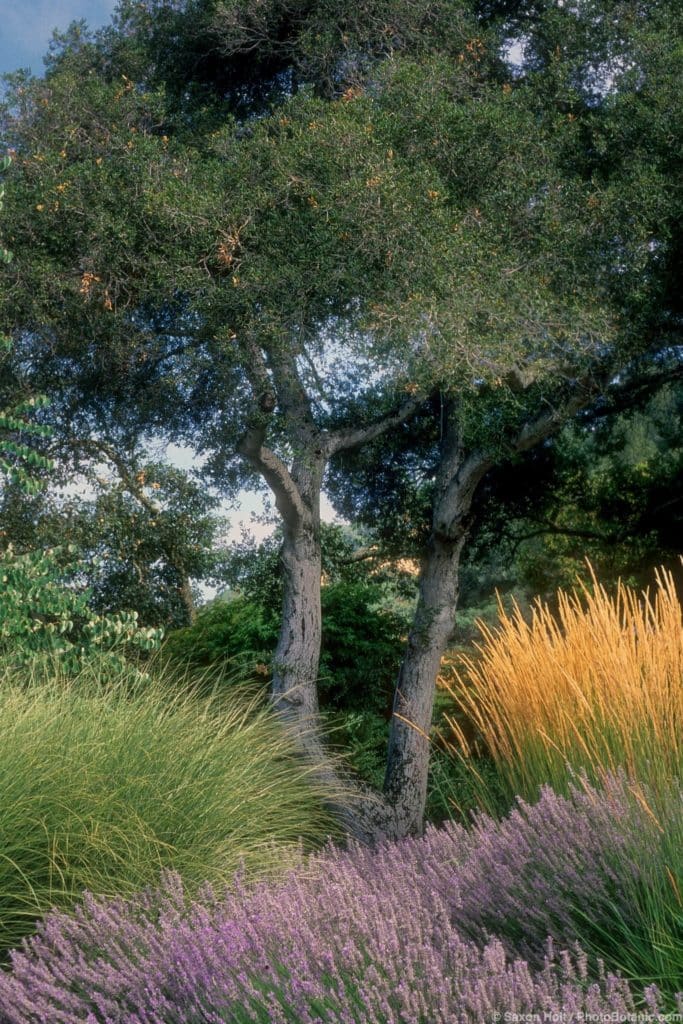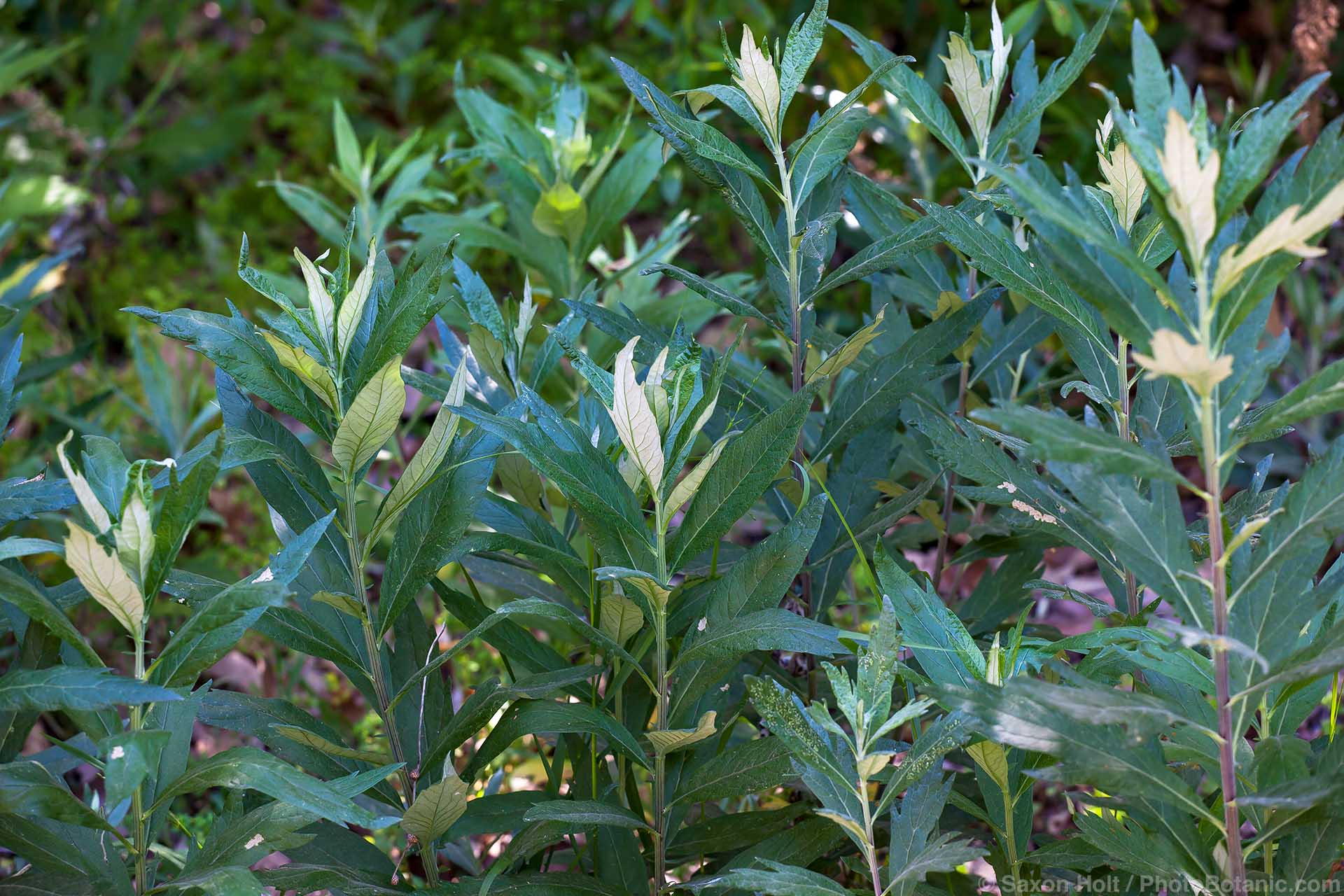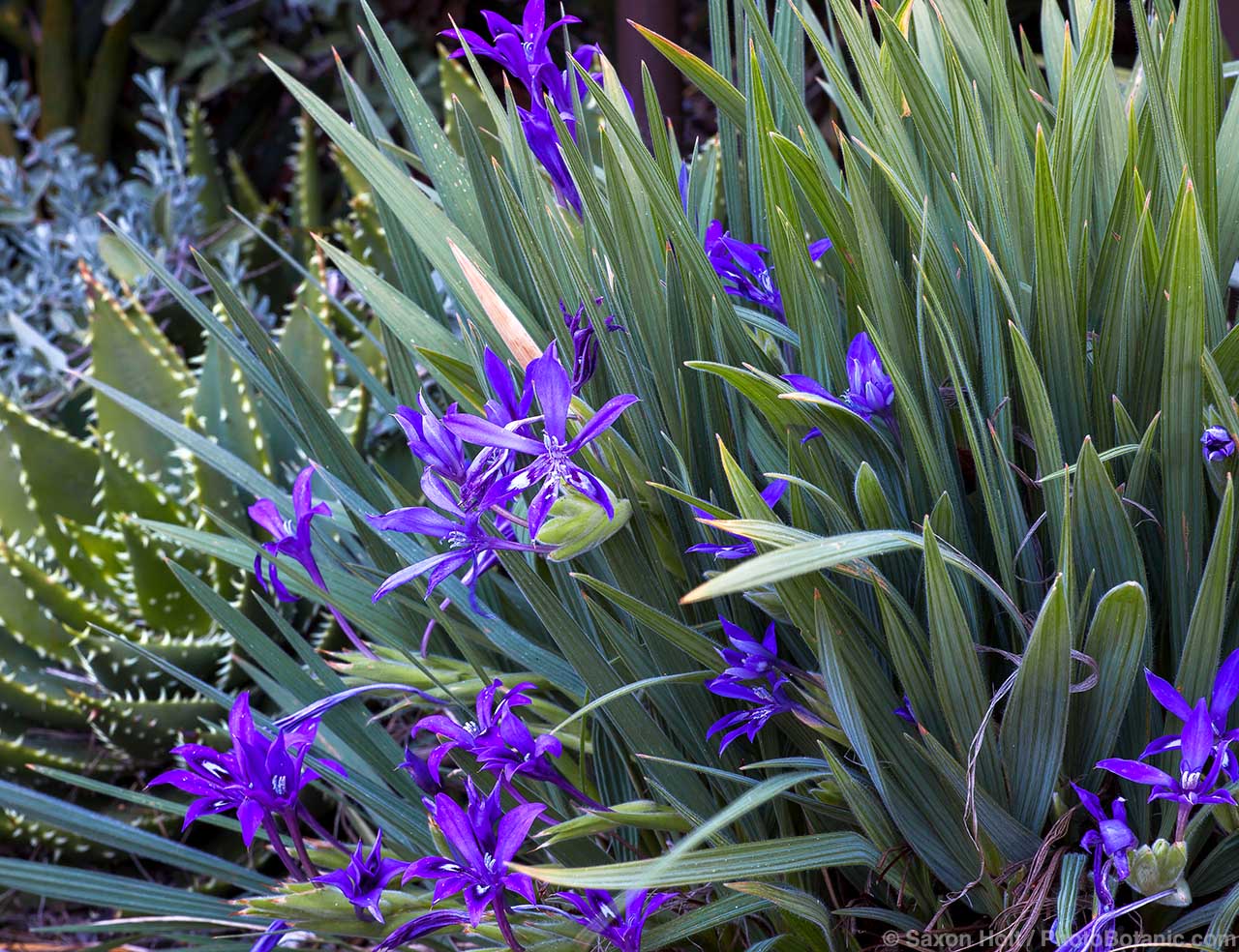Coast Live Oak
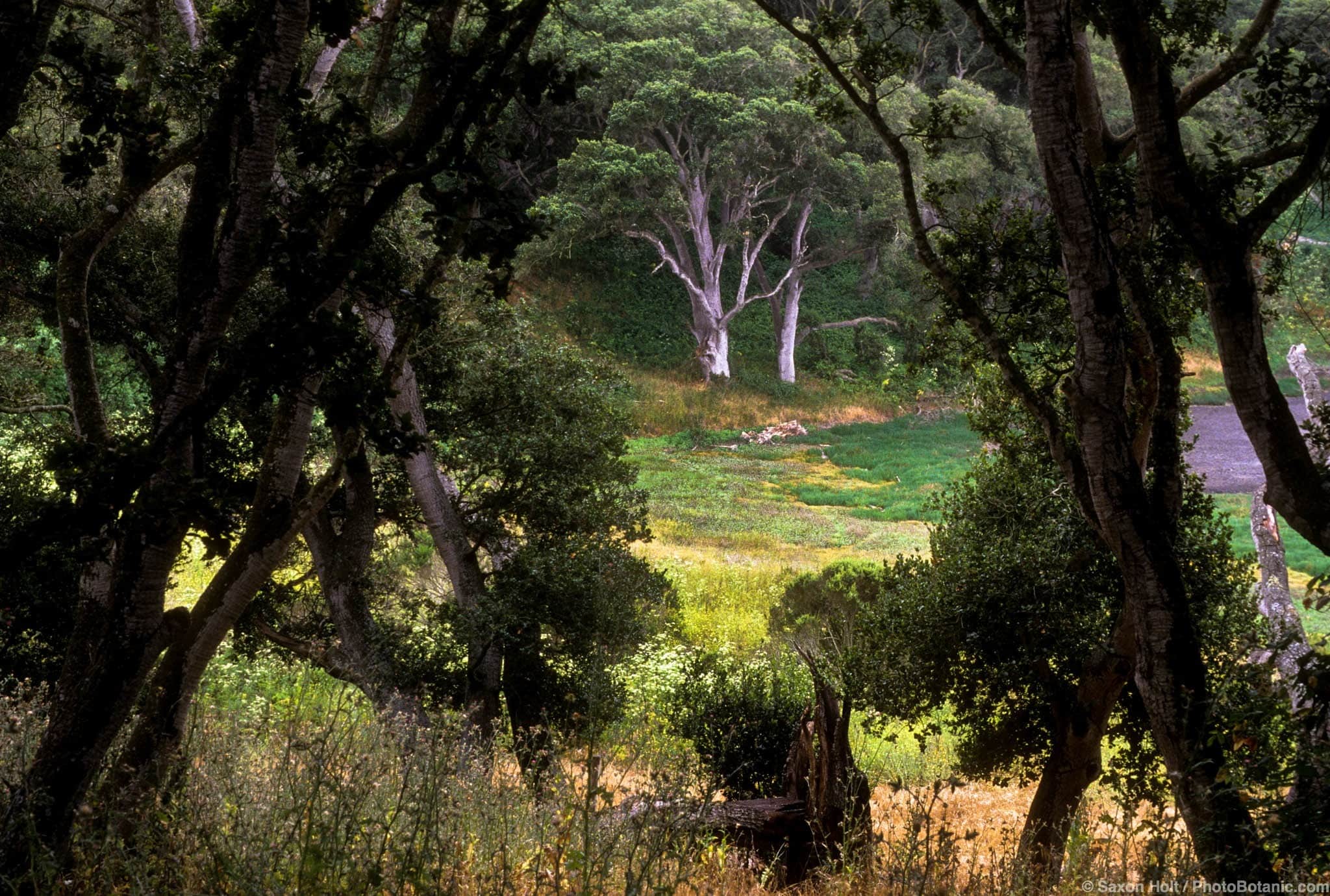
Share This!
Where did the notion come from that coast live oak (Quercus agrifolia) is slow-growing? If you have this evergreen native oak in or near your garden, you know that the small army of seedlings that crop up soon grow tall and wide enough to obscure your views or those of your neighbors.
Reaching 10 to 15 feet tall in a decade and topping out over time at 75 feet, a coast live oak uncrowded by adjacent trees will tend to develop a broad, dense canopy with wide-spreading lower branches drooping nearly to the ground. In cultivated landscapes, trees usually are limbed up high enough to walk under.
Although mature trees take full sun, seedlings tend to come up in high shade. This should tell us that newly planted trees, especially in sun, will need help for at least the first few years. Twice monthly soakings can be tapered off to nothing over four or five summers unless winters are dry. Drainage must be good; coast live oaks don’t do well with wet root crowns.
Because mature coast live oaks prefer no supplemental water, it’s best to plant only truly low- to no-water or summer-dormant plants beneath them. There are many lists for Planting Under Oaks, but a coast live oak with just a blanket of fallen leaves beneath is a splendid sight. Or you can plant low-water plants outside the dripline so trees are less affected by summer water.
Leaves are thick and leathery with spiny margins, dark green on the upper side and grayish green beneath, a fine complement to the ashy gray-brown bark. Acorns are prolific in some years, less so in others, but are always prized by squirrels, woodpeckers, scrub jays, and other wildlife.
Coast live oak is one of the many plants affected by the pathogen Phytophthera ramorum (commonly called sudden oak death), so we should be on the lookout for symptoms, especially near the urban-wildland interface. But coast live oaks shed some leaves year round, and there are many other sources of browning leaves from which most trees quickly recover. To ensure their long and healthy beautiful lives, take good care of your oaks, especially avoiding disturbance of the root zone and summer irrigation.
Share This!
Related Articles
By: Nora Harlow
By: Nora Harlow
By: Nora Harlow


